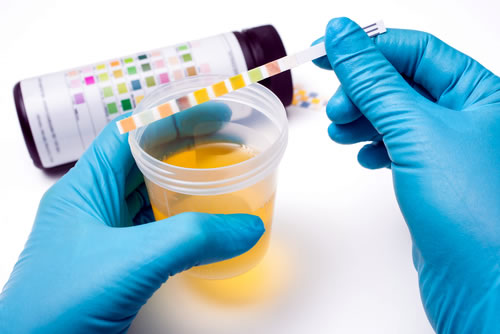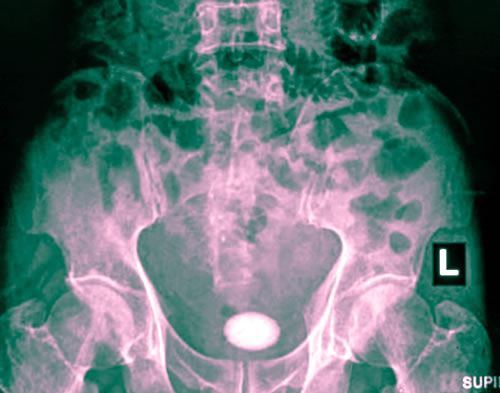An estimated 14 million men and women of all ages in the UK have bladder problems. The bladder is a muscular bag that aids the elimination of urine. It has 2 roles: Storage and Voiding; which allows us to go to the toilet around 8 times a day. The lining of the bladder is sensitive to chemicals, toxins and infections which may cause inflammation (cystitis) or cancer.
The warning signs that you may have a bladder problem include:
- Blood in the urine (haematuria)
- Pain in your lower abdomen
- Need to go to the toilet more frequently
- A very strong desire (urge) to go to the toilet
- Incontinence when you cough, sneeze, laugh or jump up and down
- Smelling of urine
- Getting up at night to pass urine (nocturia)
Generally, bladder problems are a nuisance and people will try to put up with their symptoms. However, if these symptoms become bothersome or embarrassing we can help improve the situation. It is important not to ignore new symptoms that may be linked to more serious problems such as cancer and urinary tract infections.
Cystitis
Cystitis is inflammation of the bladder, usually caused by a bladder infection. It’s a commonly caused by a type of urinary tract infection (UTI), particularly in women, and is usually more of a nuisance than a cause for serious concern. Mild cases will often get better by themselves within a few days.
However, some people experience episodes of cystitis frequently and may need regular or long-term treatment.
There’s also a chance that cystitis could lead to a more serious kidney infection in some cases, so it’s important to seek medical advice if your symptoms don’t improve. In some case the inflammation may be due to another cause or mask a more serious underlying problem.
LEEDS UROLOGY PARTNERSHIP can offer:
- Private and professional assessment
- Cystoscopy (telescopic inspection of bladder lining)
- Diet advice & drug therapy
- Bladder instillations to improve healing and optimise natural protection
- Identify a cause for your cystitis including:
- Recurrent Urinary Tract Infections (UTI)
- Interstitial cystitis & Painful bladder syndrome
- Chemical cystitis: agent identification, toxicology, rehabilitation programmes
Bladder Cancer
- Approximately 10,700 new cases of bladder cancer in the UK in 2012, that’s around 29 people every day.
- Bladder cancer is the seventh most common cancer in the UK (2012).
- Bladder cancer accounts for 3% of all new cases in the UK (2012).
- More than half (54%) of cases of bladder cancer are diagnosed in people aged 75 and over.
- Most bladder cancer cases are diagnosed at an early stage.
- Strong risk factors include: smoking, occupational exposure to chemicals and positive family history.
- 42% cases of bladder cancer are preventable.

Bladder cancer is broadly divided into 2 main groups: non-muscle invasive (NMIBC) or superficial cancer and muscle invasive (MIBC). Treatments option sdepend on a number of factors:
- The type of cancer – NMIBC or MIBC (and carcinoma in situ)
- Age and fitness of the patient
- What previous treatments have been trialled so far
- Response to treatment
For lower risk cancers cure can often be achieved through local resection and regular check-ups (surveillance). Higher risk cancers tend to be treated more aggressively involving either bladder preserving techniques (e.g. intravesical BCG or radiotherapy) or surgical removal of the bladder and lymph nodes which is called radical cystectomy. If the bladder is removed, it will be necessary to divert urine to a bag on the tummy wall (urostomy or ileal conduit) or alternatively construct a substitute bladder.
LEEDS UROLOGY PARTNERSHIP can offer:
- Fast track haematuria (blood in pee) service – one stop assessment in less than 7 days
- Bladder biopsy and local resection using a telescope into the bladder (TURBT)
- Surveillance and treatment protocols for lower risk bladder cancer
- Dedicated psychological & emotional support
- Expert counselling
- Optimisation of medical therapy: bladder instillations (BCG/Epirubicin)
- Access to the latest international clinical trials
- Referral for radical treatment – Robotic cystectomy & Radiotherapy
- Precision cancer testing – OncofocusTM
The world’s most comprehensive precision oncology test using novel gene sequencing techniques to identify the specific genetic mutations responsible for your cancer development and growth. These results are then matched to personalised, next generation cancer drugs to target your cancer.
Download a brochure
Bladder Infections (UTI)
Urinary tract infections are the second most common type of infection in the body, accounting for about 8.1 million visits to health care providers each year. For women, the lifetime risk of having a UTI is greater than 50 percent. UTIs in men are not as common as in women but can be serious when they occur.
Most UTIs are caused by bacteria that live in the bowel. The bacterium Escherichia coli (E. coli) causes the vast majority of UTIs. Microbes called Chlamydia and Mycoplasma can infect the urethra and reproductive system but not the bladder. Chlamydia and Mycoplasma infections may be sexually transmitted and require treatment of sexual partners.
The urinary tract has several systems to prevent infection. The points where the ureters attach to the bladder act like one-way valves to prevent urine from backing up toward the kidneys, and urination washes microbes out of the body. In men, the prostate gland produces secretions that slow bacterial growth. In both sexes, immune defences also prevent infection. But despite these safeguards, infections still occur. Certain bacteria have a strong ability to attach themselves to the lining of the urinary tract.
Sexual activity can move microbes from the bowel or vaginal cavity to the urethral opening. If these microbes have special characteristics that allow them to live in the urinary tract, it is harder for the body to remove them quickly enough to prevent infection. Following sexual intercourse, most women have a significant number of bacteria in their urine, but the body normally clears them within 24 hours. Any abnormality or foreign body can be a common source of infection including catheters, stones, blockages or inability to completely empty the bladder.
Many women suffer from frequent UTIs. About 20 percent of young women with a first UTI will have a recurrent infection. With each UTI, the risk that a woman will continue having recurrent UTIs increases. Some women have three or more UTIs a year. However, very few women will have frequent infections throughout their lives. More typically, a woman will have a period of 1 or 2 years with frequent infections, after which recurring infections cease.
Men are less likely than women to have a first UTI. But once a man has a UTI, he is likely to have another because bacteria can hide deep inside prostate tissue. Anyone who has diabetes or a problem that makes it hard to urinate may have repeat infections.
Pregnant women seem no more prone to UTIs than other women. However, when a UTI does occur in a pregnant woman, it is more likely to travel to the kidneys. It is common for health care providers to routinely screen pregnant women for bacteria in the urine during the first 3 months of pregnancy.
Most UTIs are not serious, but some infections can lead to serious problems, such as kidney infections. Chronic kidney infections—infections that recur or last a long time—can cause permanent damage, including kidney scars, poor kidney function, high blood pressure, and other problems. Some acute kidney infections—infections that develop suddenly—can be life threatening, especially if the bacteria enter the bloodstream (septicaemia).
LEEDS UROLOGY PARTNERSHIP can help:
- Private and professional assessment
- Cystoscopy (telescopic inspection of bladder lining)
- Diet advice & drug therapy
- Bladder instillations to improve healing and optimise natural protection
- USS or CT scanning
- Serial urine testing for organisms/bacteria
- Video urodynamics for functional voiding problems
- Genomic testing for resistance, susceptibility traits, bacteria-isolation and targeted treatments
Identify a cause for your recurrent infections including:
Bladder Stones
Bladder (vesical) calculi are stones or calcified materials that are present in the bladder (or in a bladder substitute that functions as a urinary reservoir). They are usually associated with urinary stasis but can form in healthy individuals without evidence of anatomic defects, strictures, infections, or foreign bodies. The presence of upper urinary tract calculi is not necessarily a predisposition to the formation of bladder stones.

Bladder calculi are an uncommon cause of illness in most Western countries, but they result in specific symptoms and are a significant source of discomfort. This may range from a complete absence of symptoms to the presence of suprapubic pain, dysuria, intermittency, frequency, hesitancy, nocturia, and urinary retention.
It is important to diagnose and treat any underlying abnormality such as BPH alongside removal of the stone. All stones can be effectively and safely treated using a high power laser (see HoLEP). Alternatively, a simple, open technique to operate on the bladder and remove the stone intact can be used.
